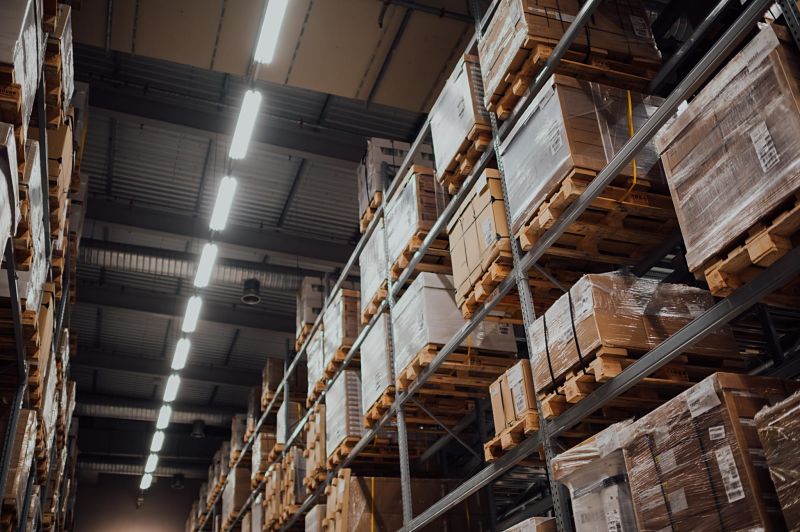Why is RFID technology necessary in a warehouse? In certain sectors, specifically those that integrate storage or logistics services, agility and speed are required when reading barcodes on the move.
As this direct and fast view between reader and tag is not always possible, RFID technology arises to further streamline the exchange of information.
Contenidos
RFID technology in a warehouse
We know that RFID is a process and infrastructure that incorporates a defined protocol and serves to store and retrieve data remotely using RFID tags, cards or transponders. In this post you can consult all the information about RFID tags and what they are for.
Therefore, if we take into account the basic functions that a warehouse has (receiving products, storing them and sending them to the customer) we can ensure that RFID technology is suitable for any warehouse in any sector, and more since the cost of the tags (specifically those with an RFID identification sticker format) has decreased.
There is no doubt that technology in general is becoming a strategic tool for a warehouse, since it can help considerably to improve the service provided to the customer while reducing costs due, among many other things, to the speed and error reduction.
Warehouse objective
Warehouse work is complex but with repetitive activities: it collects merchandise, stores it and ships it.
To carry out this operation in a profitable way, it is necessary to minimize the cost of transporting the products within the warehouse and make the most of the space and work equipment.
Without forgetting one of the most important objectives of a warehouse (and one of the greatest advantages of RFID technology) is to ensure the traceability of products effectively. And maintain, in this way, a correct control of the stock in real time to avoid breakage of the same.
Understanding by traceability that process that identifies the composition of a product, its origin, batch, the different processes to which it has been subjected and the place where it will be marketed.
Benefits and advantages of RFID for a logistics warehouse
In a warehouse one of the most important improvements (and that will help profitability) is to improve processes and automate those that are more repetitive or manual.
By implementing RFID technology in a warehouse we help to achieve a reduction in labor, in addition to identifying and locating items immediately and automatically at any point in the supply chain where they are.
But RFID technology can bring us much more from a logistical point of view:
• Agility. This is an important aspect that is complex with the use of the traditional barcode. Implementing RFID technology in a warehouse allows increasing its efficiency.
• Traceability. By implementing RFID technology we ensure reliable traceability, since the products are under control at all times.
• Inventory. We achieve greater inventory control, largely avoiding stock breakage, which improves customer service.
• Replenishment and location. Thanks to RFID technology, it is possible to know when there is no stock of an item and a replenishment is needed, as well as knowing when a product has been placed in the wrong location (picking).
• Savings. With RFID technology, monitoring of assets such as trucks, pallets or boxes is also established. Thus we can analyze and study the use that is given to those assets and establish, for example, routes within the warehouse that help achieve fuel savings and employee labor.
¿Quieres digitalizar su cadena de suministro?
Contáctenos y le ayudaremos a controlar todo su stock e inventarios con nuestras soluciones RFID totalmente adaptadas a su negocio
Contacte con nosotros
Basic elements of an RFID system required in a warehouse
We know what RFID technology is and what advantages it brings in a warehouse, but now we have to be clear about the required elements to put it into operation.
To implement RFID technology in a warehouse, several elements are needed that make up the appropriate architecture to operate within a logistics warehouse in an automated and efficient way. The operation, far from what it may seem, is simple.
These are the basic elements that are needed to implement RFID technology in a warehouse:
• RFID tags: We can find them active, passive and semi passive. In this post you can find everything about RFID technology tags.
• RFID devices: to read all the information about items contained in the tags
• RFID software: platform that manages in real time all the information read by the devices throughout the supply chain and that is fully integrated with the company’s ERP or WMS system to be able to access all the information from anywhere anytime.
Applying RFID technology to warehousing or logistics is a breakthrough in all aspects, from start to finish.
RFID tags allow you to optimize time and logistics costs. In this case we have applied and highlighted the importance of RFID technology and tags to the logistics sector, to warehouses, but there are many sectors that would increase their efficiency and profitability by applying these services:
• Retail
• Health
• Industry
• Automotive
• Food
You can learn more about RFID technology in these sectors in this blog post.
At Bionix Technologies we have the best RFID solutions for your company and we adapt to your needs to start automating your business. If you want to know our devices… Enter our website!





